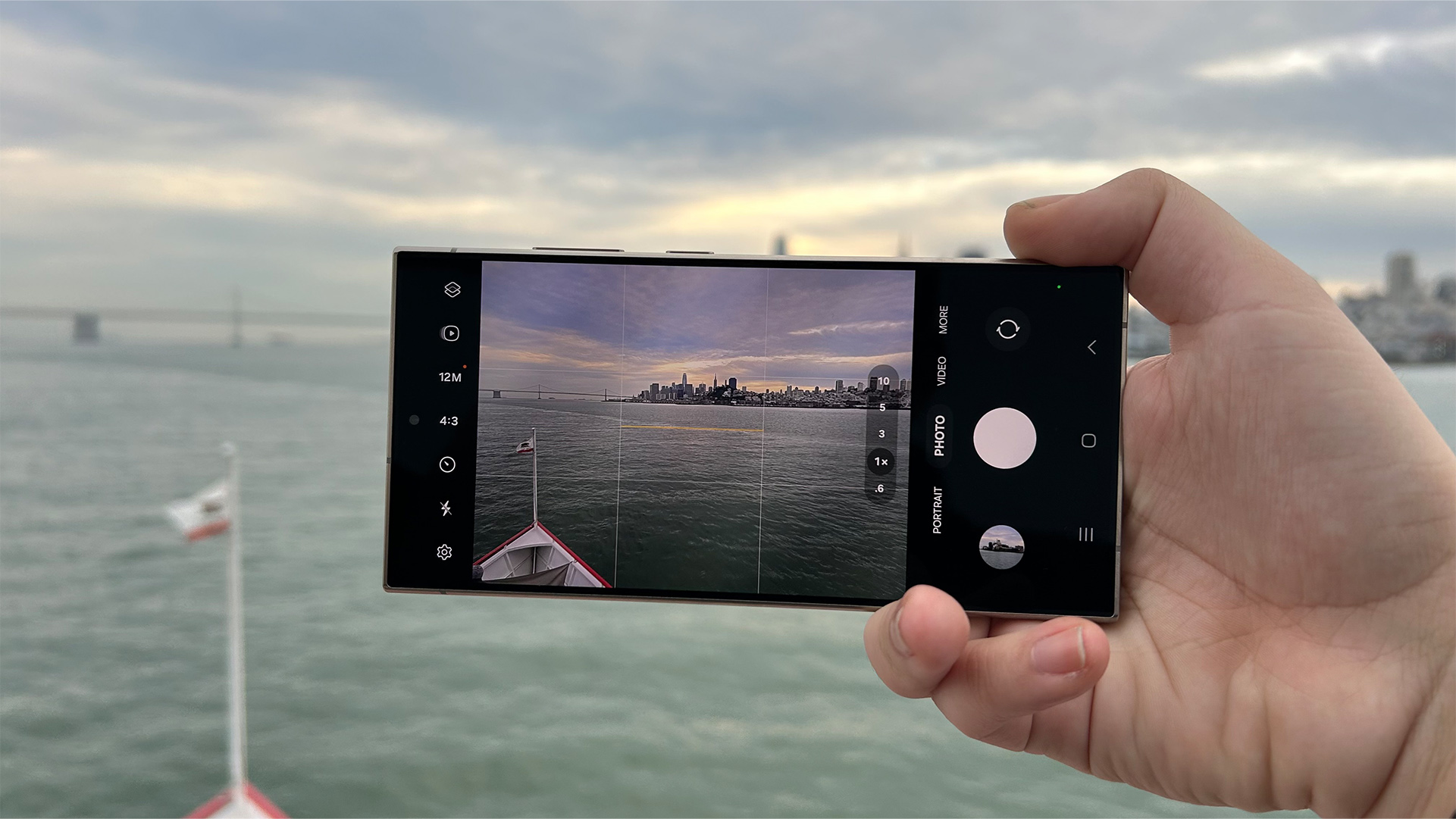
The Samsung Galaxy S24 Ultra is a phone of two halves. In some ways, it follows the current trend of samey-looking spec bumps that we’ve seen from Sony, Google and Apple. In other areas it's a revolutionary phone that’s bursting at the seams with new features and subtle tweaks that make it a seriously interesting portable device.
That being said, competition is particularly fierce right now, with Apple and Sony both at the top of their respective iOS and Android games; especially when it comes to picture and sound performance. These are, of course, the two criteria we care most about, and while Samsung makes a valiant effort to impress in these sectors, it just falls short of the competition.
Price
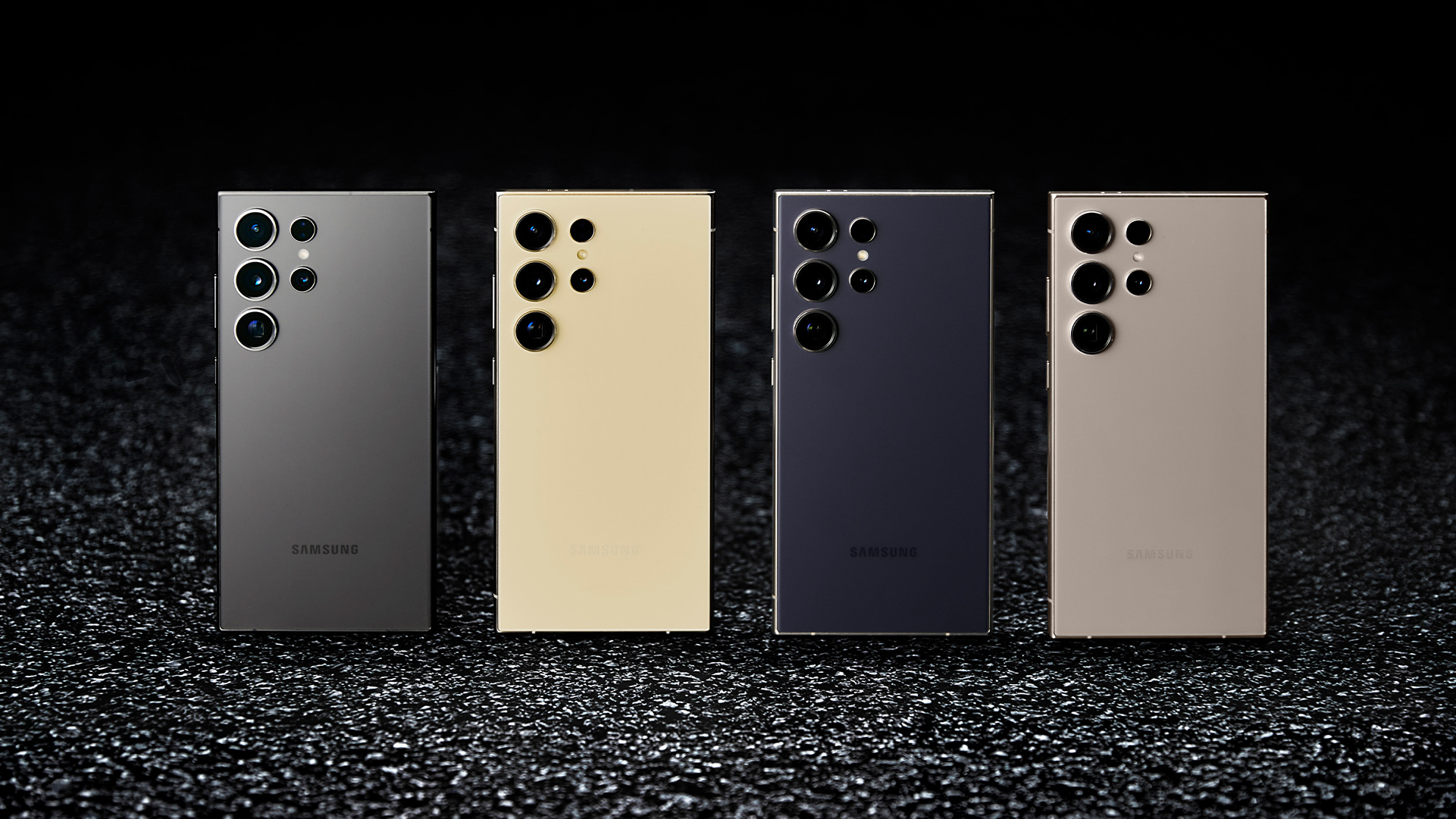
Pricing for the S24 Ultra is complicated, as in some regions it's good news and in others, it's not. Here in the UK, it’s a pleasant surprise to see that it's remaining at £1249, the same price as last year’s S23 Ultra. While we’re happy to avoid a raise in RRP, we did note that the S23 Ultra was rather expensive, so that sentiment carries over to this new model.
However, in the US and Australia, it’s a less fortunate situation. You’ll find the S24 Ultra for $1299 / AU$2199 respectively in those countries, which is a step up from the S23 Ultra which retailed at $1199 / AU$1949.
In the wider scope of the smartphone market, the S24 Ultra is more expensive than the iPhone 15 Pro Max in the UK and US (£1199 / $1199), albeit not by much. It’s the exact same price in Australia (AU$2199).
There is also the Sony Xperia 1 V to consider, which retails for £1299 / $1399 in the UK and States respectively (but not in Australia).
Build
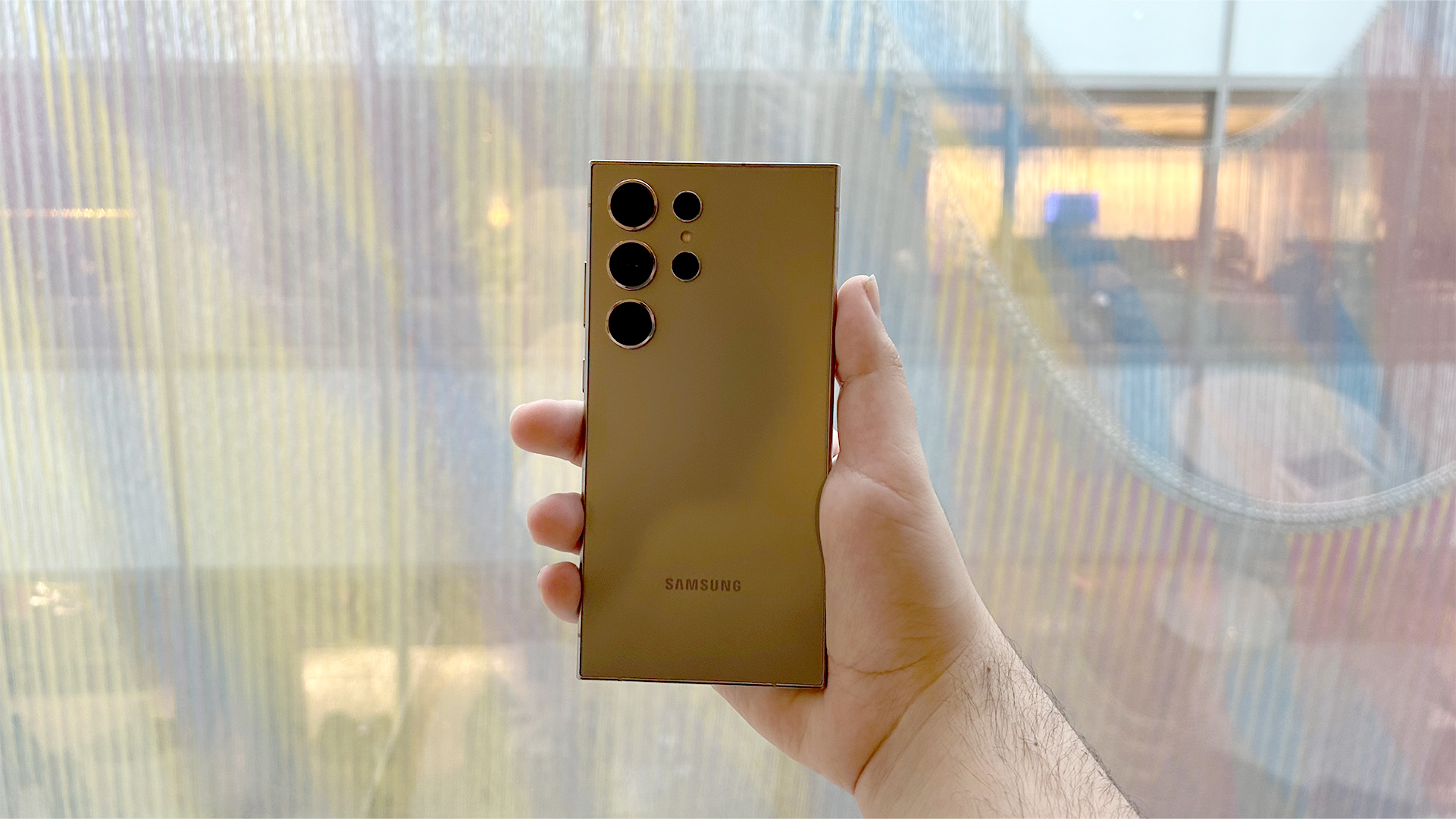
Samsung is carrying forth the design language it premiered on the S22 Ultra, making this the third Ultra device to use this body style. That being said, there are a few notable differences this year, starting with the fact that this phone is completely flat. The curved edges on either side of the display have been a mainstay of the Galaxy S series since 2015’s Galaxy S6 Edge, however, Samsung has done away with the trend on the S24 series. Benefits of ditching the curve include less screen glare, less distortion towards the edges of the screen and fewer accidental touches; so we certainly approve of this change.
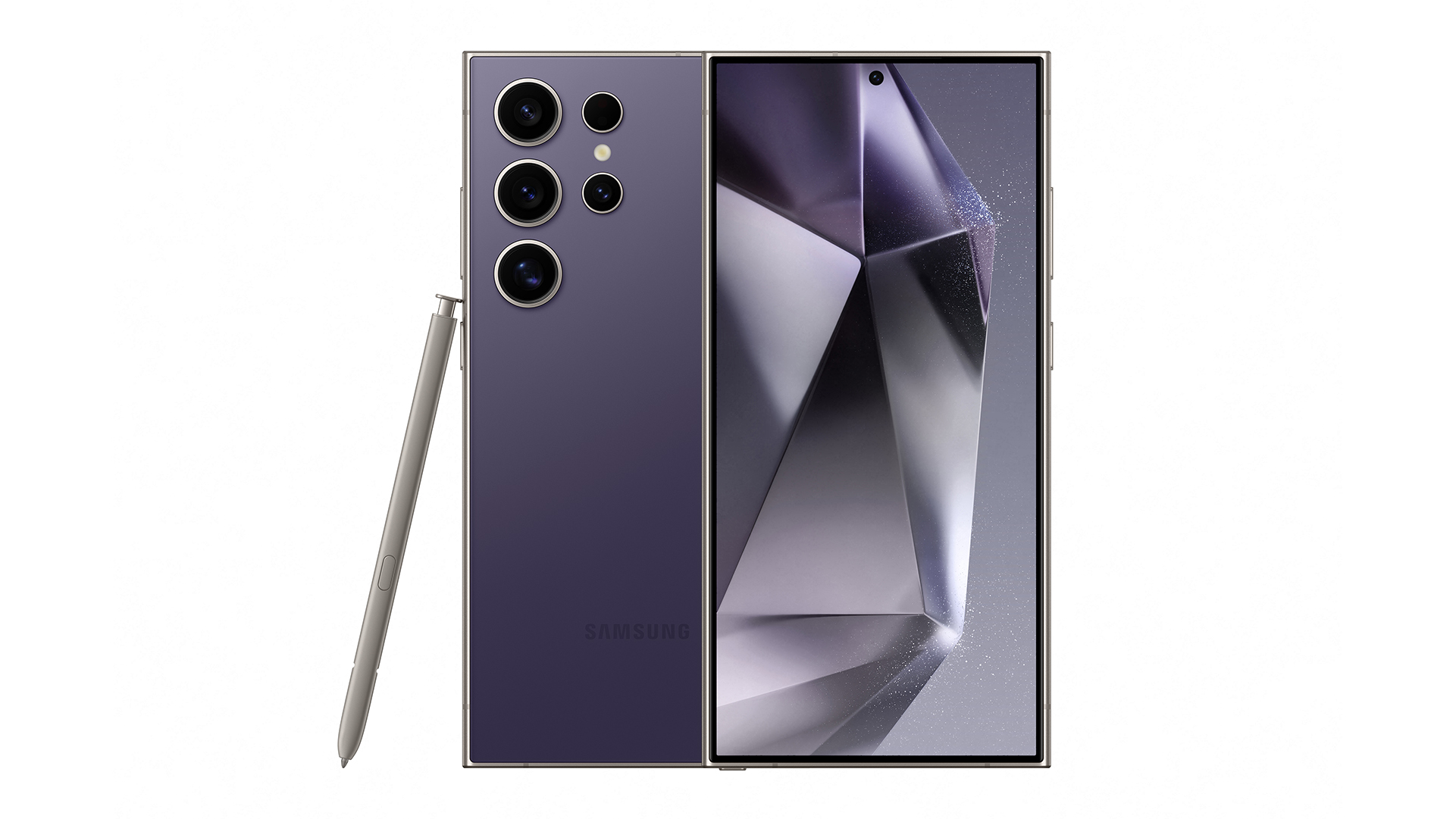
Screen size 6.8-inch
Screen type Dynamic AMOLED
Screen resolution 1440 x 3120 pixels (505 ppi)
Finishes Titanium Black, Titanium Grey, Titanium Violet, Titanium Yellow (widely available), Titanium Blue, Titanium Green, Titanium Orange (Samsung.com)
Operating system Android 14 (One UI 6.1)
Storage 256GB / 512GB / 1TB
RAM 12GB
Elsewhere, the slightly clumsy cluster of lenses on the rear of the device (four cameras, a laser autofocus module and a flash) remain in the top left-hand corner, with a satin glass finish adorning the back. You’ll find a total of seven colour options available, including Titanium Black, Titanium Grey, Titanium Violet and Titanium Yellow (widely available), as well as Titanium Blue, Titanium Green and Titanium Orange (Samsung.com exclusives).
Another change comes in the form of a new build material within the frame of the device. This year, Samsung has equipped its ultra-level Galaxy S smartphone with a titanium frame, which is very reminiscent of Apple’s latest Pro series smartphone. The titanium doesn’t do much in the way of weight reduction – the S24 Ultra is nigh on the same weight as the S23 Ultra at 233g – but it does give the frame a matte, almost gritty texture that feels great in the hand, adds some grip, and wards off fingerprints. It also enhances the durability of this device (we’ll take Samsung’s word for it), as does the new Corning Gorilla Armour glass, which doubles up to increase scratch resistance and reduce screen reflectivity by up to 75 per cent. In practice we’ve had no trouble viewing the screen, even in direct sunlight.
We have to say that Samsung has certainly made improvements with each change it made to the S24 Ultra’s design, but it isn’t the most visually appealing phone on the market. Yes, it's understated and certainly well-crafted, but it’s not a distinctive design like Google’s camera bar-equipped Pixel 8 Pro.
Features
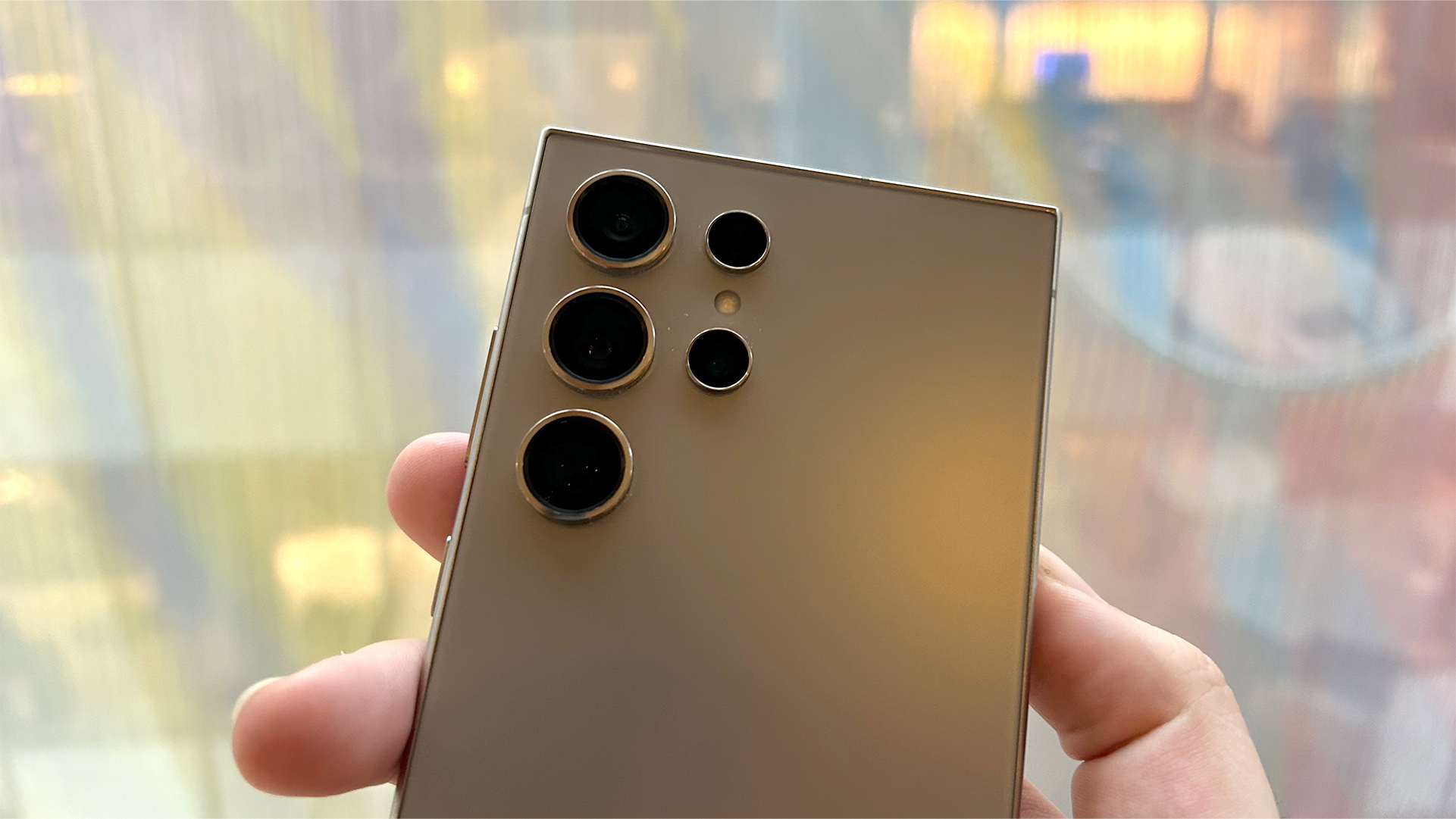
If you want a phone that’s paramount in the features department, you’d be hard-pressed to find something better equipped than the S24 Ultra. Samsung has outfitted this Ultra device with the very latest and greatest in hardware and software features, with a major focus on AI this year.
Before we get into the new AI tricks, we’ll take a quick tour of the new hardware features on the S24 Ultra, starting with the processor. This is the first phone we’ve tested with the Qualcomm Snapdragon 8 Gen 3 processor, although this is unique in being a “for Galaxy” version of the chip. To our knowledge, that just means that this version of the processor features a slightly higher clock speed. Backed by 12GB of RAM and either 256GB, 512GB or 1TB of storage (the last one being a Samsung.com exclusive option), the S24 Ultra absolutely flies through the Android 14 operating system. Samsung has also promised a whopping seven years of security updates and seven generations of Android updates; impressive future-proofing indeed.
Battery life is also solid on the S24 Ultra, thanks to the 5000mAh non-removable cell inside the phone. It easily makes it through a day of fairly heavy use, including photography, music playing and messaging, with battery to spare; although it certainly won’t make it through two full days by any means. Be prepared to supply your own USB adapter, as you’ll only get a USB-C cable in the box; however, this phone is capable of up to 45W wired quick charging or 15W wireless charging. It also features reverse wireless charging, ideal for topping up Bluetooth earbuds or even charging up a friend’s phone if you’re feeling generous.
The S24 Ultra also features two key proprietary pieces of the ‘Ultra’ puzzle found in past iterations. First is the S-Pen, which migrated from the now-defunct Note series, and it's tucked into the frame of the phone ready to be deployed at any time with a satisfying click. The second is the camera system on this phone, which comprises five total sensors; four on the rear, and one on the front.
It’s mostly the same as last year’s phone, with one sensor being swapped out. Returning are the 200MP main sensor, 12MP ultra-wide lens and 10MP telephoto, however, the second telephoto lens is all new. It’s now using a 50MP, 5x zoom lens, whereas the S23 Ultra uses a 10MP, 10x zoom lens; which means that resolution gets an increase while optical zoom length gets a downgrade on paper. In practice, it improves the quality of photographs taken between the 5x and 10x zoom lengths, which is much more practical.
In terms of camera performance, the S24 Ultra is a mighty fine performer. While pictures can lean on the over-processed side of things, they’re wonderfully sharp and punchy, and things are aided nicely by the ability to view an image in HDR right from the camera app. This makes taking shots with the S24 Ultra a breeze, and its variety of lenses can handle everything from wide-open city skyline pictures to low-light snaps in dimly lit restaurants.
Moving back towards the aspects we care about most, let's take a look at the screen on this phone. It's an expansive 6.8-inch AMOLED display with a resolution of 1440 x 3120 and a variable refresh rate of 1Hz to 120Hz. This is practically identical to last year’s S23 Ultra, although this year it gets a boost to 2600 nits peak brightness. It’s HDR10+ compatible, which is ideal for watching Amazon Prime Video and YouTube, but less ideal for Dolby Vision-specific streaming apps like Netflix and Disney Plus.
On the subject of the screen, here is where we can discuss aspect ratio. We harp on about how Sony’s 21:9 screens are ideal for watching cinematic content, and while we do stick with that, we are willing to concede that it does sacrifice practicality. The 19.5:9 aspect ratio on this phone is much closer to the industry standard, and therefore app compatibility and comfortability in daily use are better on the S24 Ultra, although results may vary by hand size.
Moving onto sound, the S24 Ultra features a practically identical set-up to the S23 Ultra. The earpiece and bottom-firing speaker combine to make a stereo pair, and if you want to use headphones you’ll have to either go wireless or purchase a USB-C to 3.5mm aux adapter. If you want to go via the wireless route then you can expect support for Bluetooth 5.3, A2DP and LE. Dolby Atmos is also supported over headphone and speaker audio too, just be sure to turn it on in the settings menu.
The headlining feature of the S24 Ultra is the new Galaxy AI tools, which Samsung has sprinkled throughout nearly every aspect of the device. There are almost too many features to talk about, including real-time texting and calling translation between 13 supported languages, intelligent voice note transcription, typing revisions based on different tones/scenarios and smart summarisation of documents and recordings, just to name a few.
However, two features stick out to us as the most useful. The first of which is “Circle to Search with Google” which allows you to draw a ring around anything on screen in order to perform a quick and seamless web search; something that sounds simple but becomes almost invaluable once you've put it to use. Second are the AI photo editor options, which allow you to remove subjects from photos or even move them to other sections. AI will then generatively fill the background space that the subject leaves. Other photo editing tools include adding a portrait-style background blur to photos after you’ve taken them and the ability to remove reflections in windows.
We find ourselves using both of these features constantly, making them the standouts of the new AI tools. However, we should mention that Samsung intends to bring some of the Galaxy AI features to older Galaxy devices, including the S23 Ultra and Z Fold 5, at a later date.
Picture
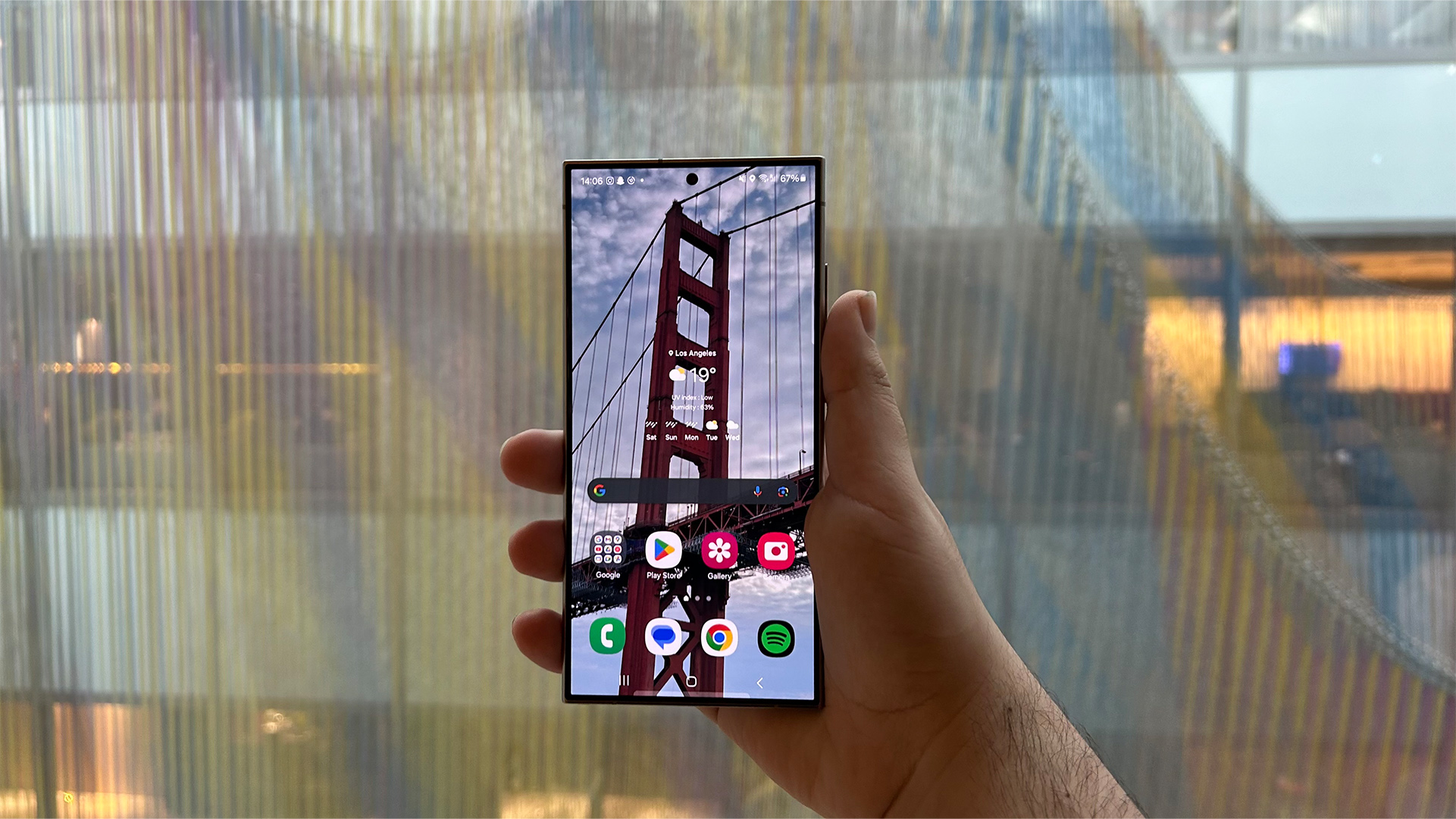
Picture performance on the S24 Ultra is indicative of its predecessor, and in many ways, of Samsung’s recent TVs. It’s bright, punchy and sharp, which is all good news, but its rivals outpace it when it comes to subtlety. For reference, we switched to the natural colour preset in the display section of the settings menu and used creator mode on the Sony Xperia 1 V for comparison.
Starting off with Blade Runner 2049 on Amazon Prime Video, first impressions are strong. The large screen plays into this well, as the opening shots of the solar panel fields feel impactful and cinematic. As the shot transitions to the interior of Officer K’s car, we can pick out the stippled texture on the dashboard and even some outlines of the switches found in the very darkest part of the picture.
As we transition to an outdoor shot of K walking towards Sapper Morton’s homestead, we’re certainly impressed by the Samsung’s clean-cut edges which certainly add a sense of depth to the image. That being said, the Sony provides an even more solid and three-dimensional image thanks to its formidable contrast control and higher-resolution display.
We also notice a slight hitch in movement on the S24 Ultra, with a panning shot across the farm creating serious problems for an outhouse. It appears to flicker as the shot proceeds, and while this is also somewhat apparent on the Xperia 1 V, it appears more noticeable on the S24 Ultra.
Shifting over to Top Gun: Maverick (on Paramount Plus via Amazon Prime Video), the S24 Ultra is in its element. This bright and punchy film is right at home on the Samsung, and the scene where Maverick completes the test run in record time is a shining example.
The sun gleams and reflections on the jet as it weaves through the course are dazzling thanks to the S24 Ultra’s brilliantly high brightness. The reservations we had about the motion are less prevalent too, with the fighter jet roaring and spiralling at breakneck speeds without any apparent stutters.
The interior shots of the other pilots watching Maverick’s progress give us an impression of how this phone handles skin textures and tones. The former is done well, with plenty of details to be gathered from subtle creases and lines on the actors’ faces, whereas skin tones are perhaps slightly overdone.
Comparing it to the Sony once again, we find that the Samsung is bettered when it comes to detail and depth making for a wholly more cinematic image that is tough to compete with. That being said, the punchy colours of the Samsung do make us wish that Sony’s colours were a tad more lively, but we’ll always take the more subtle offering as we want an authentic picture presentation.
Ultimately that’s what the Sony nails over the Samsung, as the Xperia 1 V’s image is much more nuanced, with more careful attention given to things like contrast, which amounts to a much more engaging picture.
Finishing things off with a quick test of some SDR content, we use The Office (US) to see how the S24 Ultra handles older content. There are no issues to report here, as details in skin, clothing and environmental textures are impressive, and there is an appreciated touch of brightness and vividness given to colours throughout.
Sound
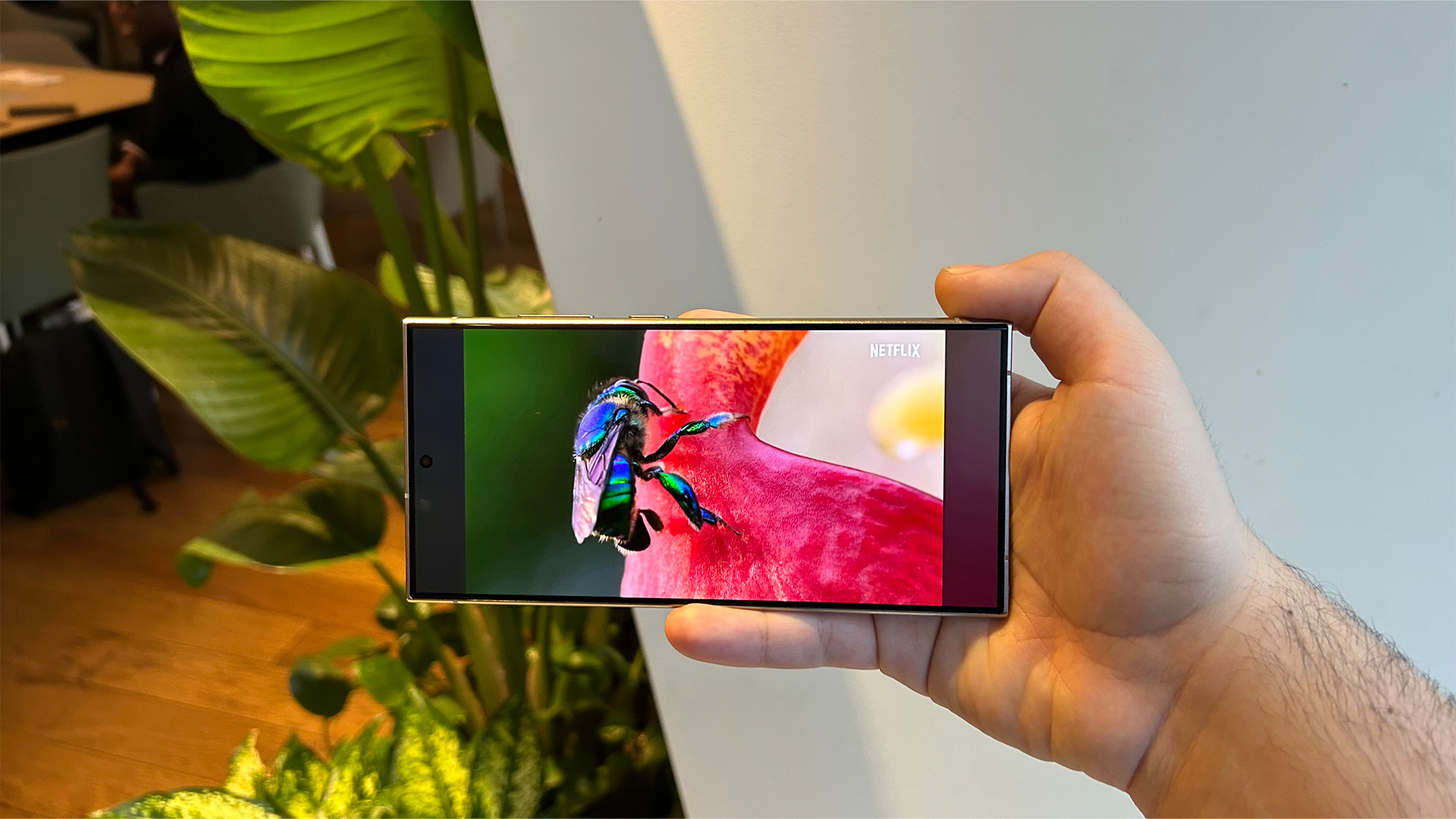
Much like the picture performance, the S24 Ultra gets a lot right when it comes to sound, but it lacks some subtlety compared to its competitors.
Firing up Bon Iver’s For Emma on Tidal, the initial guitar strums are well placed and have a touch of warmth to them, prompting initially solid impressions. This carries forth with lead singer Justin Vernon’s vocals, which are impressively clear and have a hint of emotional texture. However, switching to the Sony (and using the same headphones and USB-C to 3.5mm adapter) we are met with a much richer and textured rendition of the song. The brief trumpet motif strikes an oddly nostalgic chord on the Sony, thanks to its enhanced subtlety.
Switching to Boygenius’ Not Strong Enough for something with a touch more pace, the Samsung proves it can deliver an energetic performance, and it once again boasts impressive clarity and a decent sense of space. We can vouch for it being a perfectly good device for listening to music on, in fact, but the Sony just trickles in that additional layer of detail and texture that allows us to engage with the music further.
Similarly, the speakers on the S24 Ultra, while we never recommend listening to music through smartphone speakers, are actually quite impressive for the occasional TV show or movie. The sheer size of the device allows for a decent sense of stereo separation, which is backed up with Dolby Atmos for a solid attempt at cinematic sound.
Verdict
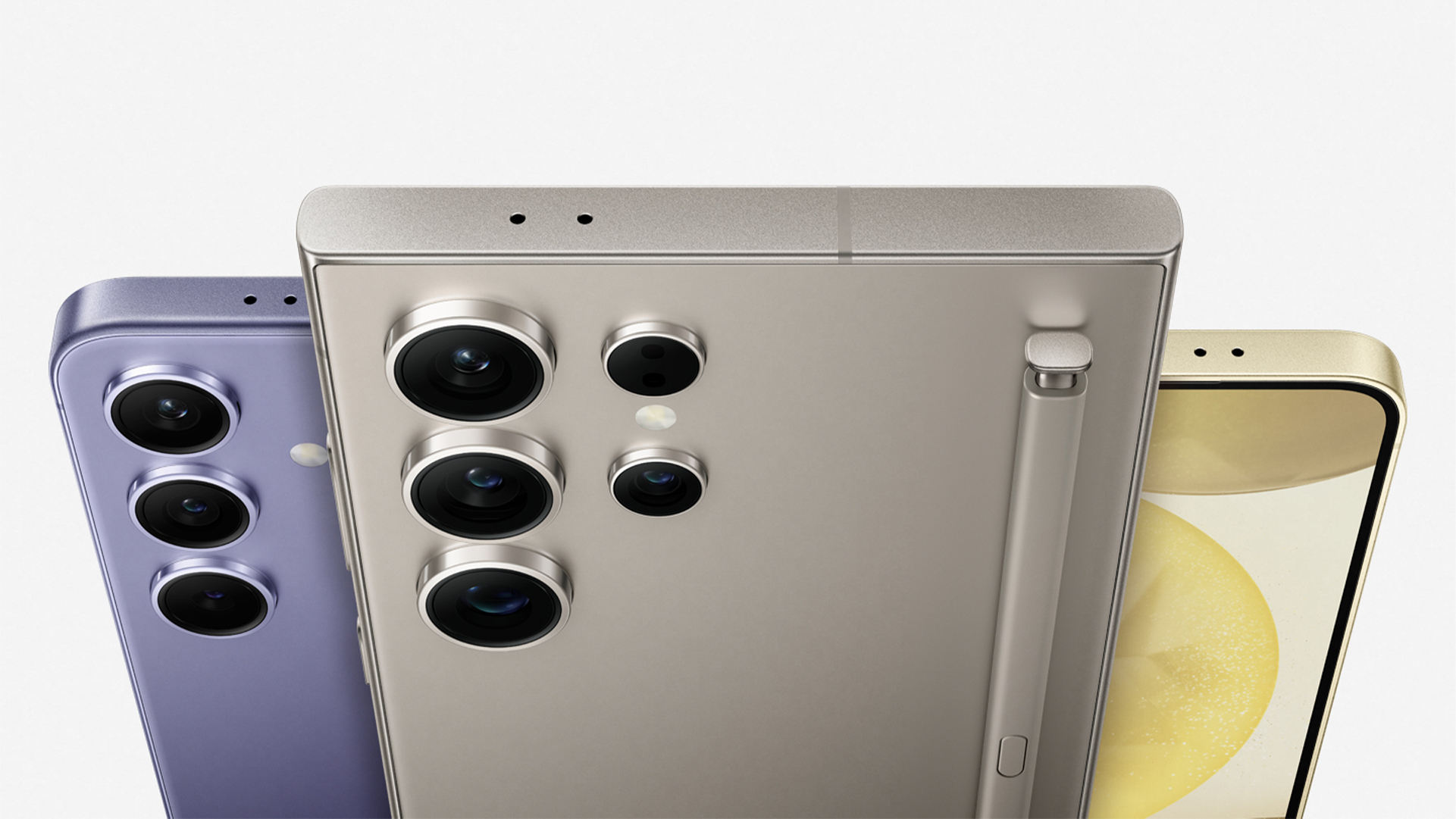
If we lived in an alternate universe where picture and sound weren’t paramount to how we review a phone, then we would have absolutely no trouble recommending the Samsung Galaxy S24 Ultra over its competitors. It’s big, bold and filled to the brim with useful features, making it a phone that’s tough to criticise. However, as a portable AV device, it can’t quite capture the same subtleties as its competitors, which means it just misses out on a five-star rating.
SCORES
- Picture 4
- Sound 4
- Features 5
MORE:
Read our review of the Sony Xperia 1 V
Also consider the Apple iPhone 15 Pro Max
Read our Google Pixel 8 Pro review







